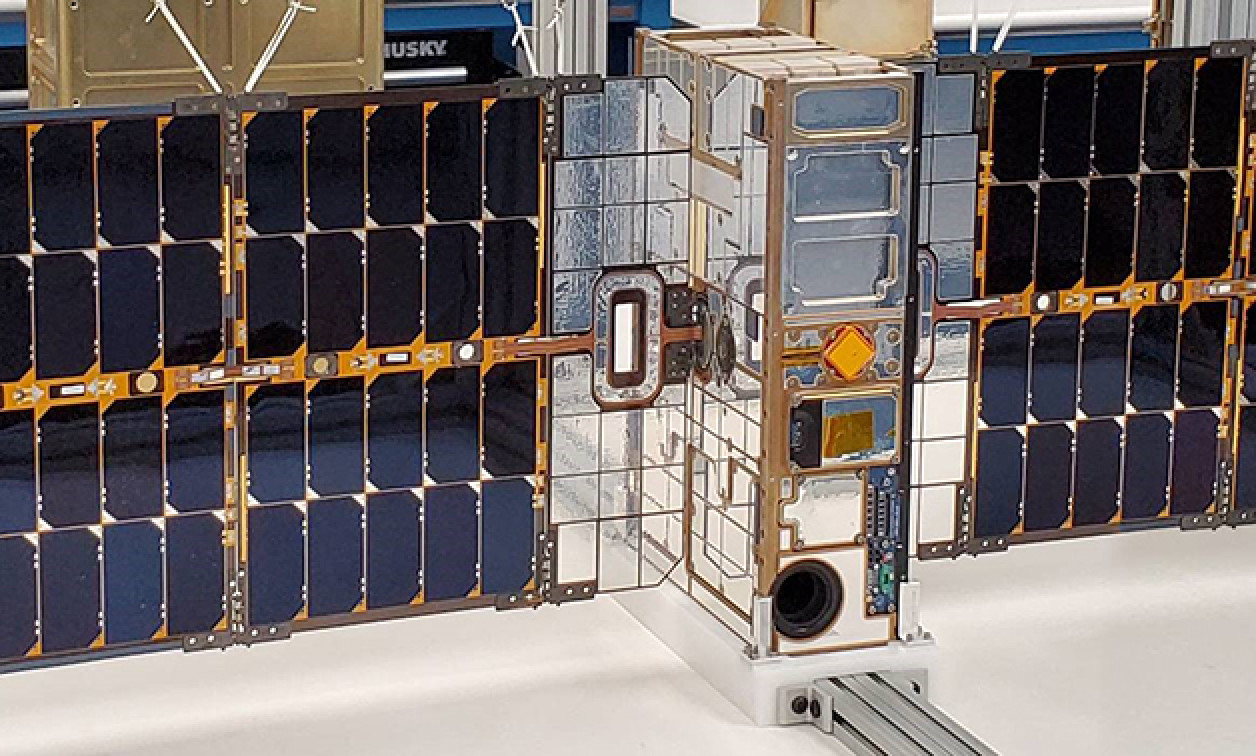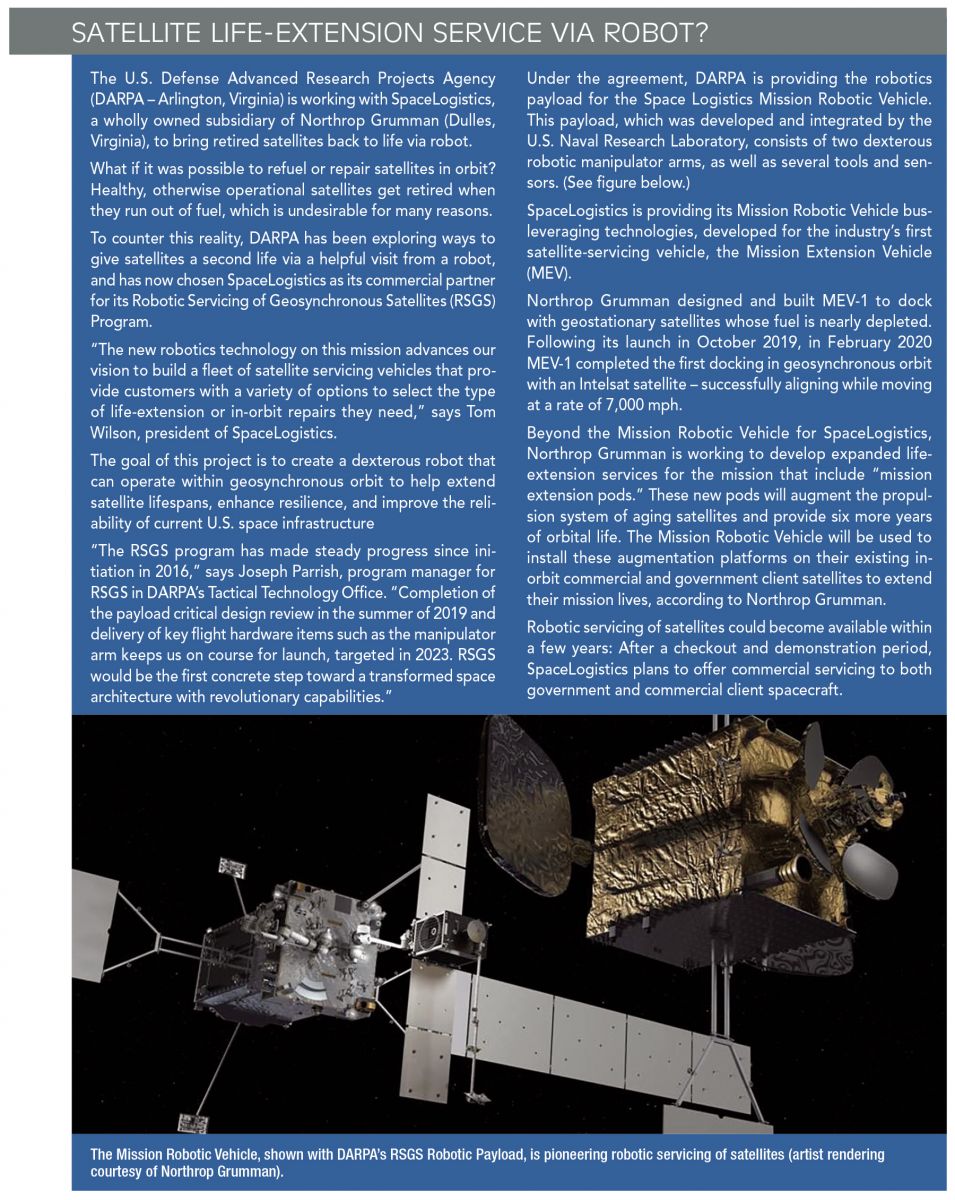New era of space-based computing is underway
StoryJune 15, 2020

It’s happening: Space-based computing that can enable artificial intelligence, data analytics, cloud networking, and advanced satellite communications within a software-defined satellite architecture.
Small satellites, or small sats, are changing how commercial and military satellite providers view space procurement. Typically deployed in low Earth orbit (LEO) in constellations that range in size from 10 to as many as 1,000 satellites, these appeal to many commercial communications suppliers due to their lower price points and faster deployments. However, small sats also appeal to military users who want to get technology in orbit faster to take advantage of state-of-the-art technology and keep up with adversaries’ evolving threats.
While size is an advantage with small sats, it also creates challenges concerning how much capability you can pack into these small spacecraft.
“The biggest challenge with small sats is size – you’re limited by how many sensors, processors, and the amount of power you can pack into a small payload,” says Mike Drews, Pony Express program manager for Lockheed Martin (Denver, Colorado).
In January 2020, Lockheed Martin launched the Pony Express-1, a hosted payload the size of a shoebox carrying new hardware and software to validate for space-based computing. The satellite – developed, built, and integrated within nine months – is funded by Lockheed Martin Research and Development.
For these small sats, commercial off-the-shelf (COTS) products, including military-grade components, can be used: “For shorter missions, we’re even using hardware that isn’t radiation-hardened to accelerate the mission design and development lifecycle,” Drews points out. “This lets us use newer, more advanced technologies that haven’t been used in space before. And it means we can design and integrate something within months instead of years.”
The Pony Express dual-use payload is designed to enable space mesh networks through HiveStar technology, as well as to test space-to-ground remote sensing. The small sat also features several interesting new capabilities, including 3D-printed structures, multicore processing, large-scale data storage, and small-SWaP [size, weight, and power] electric propulsion, Drews says. (Figure 1.)

[Figure 1 | A technician working on The Pony Express-1 mission payload for the Tyvak-0129, a next-generation Tyvak 6U spacecraft. Courtesy of Lockheed Martin.
Space mesh networks
If you’re familiar with Internet of Things (IoT) mesh networks, a space mesh network is the same concept – but in orbit. “Space mesh networking seeks to have all of the orbital devices talk to each other automatically,” Drews says.
This connectivity produces a globe-spanning network that enables new opportunities for sending commands and applications to satellites. “Mesh networking essentially turns every device into an always-on internet node,” he explains. “The other benefit is that it ensures better access to Earth without forcing flybys of specific ground stations. Command and control and data movement becomes transparent.”
One of the complexities involved is the physics of closing communications links between satellites at orbital distance scales. “Right now, because this concept is new, not everything is always connected,” Drews notes. “In the future, hopefully it will be ‘always connected’ with more nodes and coverage. Another way to think of this is that the satellite is self-aware of its network status and can momentarily store and forward data until the satellite becomes connected again.”
Pony Express acts as a local mesh network, whereas other long-range mesh networks provide connectivity between orbits (geosynchronous to medium Earth orbit, Earth to LEO, etc.).
Software for smart satellites: Unlocking greater processing power
HiveStar software enables systems to “interlink satellites and their applications to distribute software capabilities seamlessly across a constellation of satellites,” Drews explains. “It’s a software-based mission architecture that provides distributed cloud processing, task distribution, and autonomous operations.”
It can take advantage of sensors aboard other smart satellites to customize missions in ways that were previously challenging to do in space.
One of Hivestar’s key features is an event-based distributed application model that includes completely specified missions, executing on demand, autonomously – to find resources, perform tasks, and send results where needed. “Missions defined by applications can be easily uploaded to the satellite, similar to how you would download a new app to your phone from an app store,” Drews points out.
SmartSat: Software-defined satellite architecture
SmartSat provides the infrastructure framework for common elements that don’t need to be redeveloped every time. It uses a high-power radiation-hardened computer developed by the National Science Foundation’s Center for Space, High-Performance, and Resilient Computing.
“By eliminating the development time, we think it will reduce the cost of satellites long-term,” Drews says. “Think about it from a mission-perspective: If you can build one satellite that does multiple missions instead of launching multiple satellites, it’s a huge cost savings.”
SmartSat takes advantage of multicore processing – which is new to space – to let satellites process more data in orbit so they can beam down just the most critical and relevant information needed. This maneuver saves bandwidth, reduces the burden on ground-station analysts, and may help open the door to data centers in space. (Figure 2.)

[Figure 2 | SmartSat uses multicore processing, a newcomer to the space arena. Courtesy of Lockheed Martin.]
For security, “SmartSat uses a variety of advanced techniques to ensure satellites are cyber hardened,” says Adam Johnson, SmartSat program director for Lockheed Martin. “This includes software- and hardware-based intrusion detection, secure coding, encryption, and identity management.”SmartSat relies on a hypervisor to securely containerize virtual machines. This setup enables a single computer to operate multiple servers virtually to maximize memory, onboard processing, and network bandwidth.
Lockheed Martin’s Space Cyber Engineering team was involved in SmartSat development right from the start. It’s “unique because it’s designed to have significant on-orbit reprogrammability and autonomy,” Johnson adds. “The built-in flexibility also allows for more responsive security needs as they evolve. We can now deploy, update, patch, install, reconfigure, and remove systems and applications while the system is in flight. As the threat landscape evolves and new attack patterns emerge, SmartSat can be updated to proactively defend against new threats: this is huge.”
Additionally, the SmartSat team made it harder to hack the satellite: “Communications with satellites are protected by cryptography – which is a strong control but by no means the only control,” Johnson says. “Relying on a single control against a persistent attacker would provide little to no protection once a breach has occurred. Concepts like a ‘zero-trust’ approach, defendable architectures, evolved computer network defense, and endpoint security are some of the ways we secure our systems, including SmartSat. We also use DevSecOps secure coding to ensure software is being developed securely throughout the development life cycle.”
Software-defined radio
Pony Express is using a software-defined radio (SDR), a technology commonly used by the military (which isn’t new to space), but “the Moore’s law curve is making them significantly more capable,” Drews says. “It’s only been a few years since they’ve been capable enough to use on micro/small satellites. Software-defined radios are still a nascent, cutting-edge technology. They’re tiny RF reprogrammable boxes with multicore processors to suit evolving mission needs.”
An SDR enables high-bandwidth hosting of multiple RF applications, the ability to store and forward RF collection, data compression, digital signal processing, and waveform transmission.
Upcoming research missions, including like Pony Express-2, will further advance cloud networking concepts among satellites, as well as validate Lockheed Martin’s SmartSat software-defined satellite architecture, which enables streamlined hosting of flexible mission apps.
Pony Express-2 consists of two 12U CubeSats with faster, more capable, ultrascale processors to unlock in-orbit data analytics and artificial intelligence. Lockheed Martin says that Pony Express-2 – equipped with miniaturized cross-link and precision timing – will be a trailblazer for autonomous teaming in space and true cloud networking.
Follow-on Pony Express missions will seek to test and prove out RF-enabled swarming formations and space-to-space networking.






